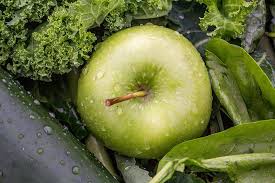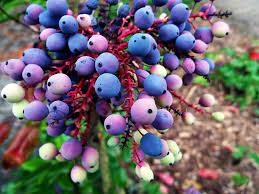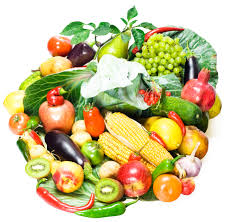Table of Contents

A young girl named Lily loved to eat colorful fruits and vegetables. She had heard from her grandmother that eating a variety of colors was not only delicious but also very healthy for her body.
Lily was always on the lookout for new and exciting fruits and vegetables to add to her meals. One day, she went to the grocery store with her mom, and she saw a beautiful display of rainbow-colored produce.
There were red strawberries, orange carrots, yellow bananas, green cucumbers, blueberries, and purple grapes. Lily was amazed by the different colors and couldn’t wait to try them all.
As they walked through the store, Lily’s mom explained to her that each color of fruit and vegetable provided different nutrients for her body. Red fruits and vegetables, like tomatoes and watermelon, contained lycopene, which was good for her heart.
Orange fruits and vegetables, like sweet potatoes and oranges, were high in vitamin C, which helped to boost her immune system. Yellow fruits and vegetables, like pineapple and corn, contained beta-carotene, which was good for her eyes.
Green fruits and vegetables, like spinach and broccoli, were high in calcium, which was good for her bones. Blue and purple fruits and vegetables, like blueberries and eggplant, contained anthocyanins, which were good for her brain.
Lily was fascinated by all the different nutrients that each color provided. She decided to make a rainbow-colored salad for her family that night. She included red tomatoes, orange carrots, yellow peppers, green lettuce, blueberries, and purple cabbage. Her family was amazed by the beautiful colors and loved the delicious flavors.
From that day on, Lily made it a point to include as many different colors of fruits and vegetables in her meals as possible.
She found that not only did her meals look beautiful, but she also felt healthier and more energized. Her skin started to glow, her hair became shinier, and she felt more alert and focused.
Lily also shared her love of colorful fruits and vegetables with her friends. She started a club at school called the “Rainbow Eaters” and encouraged her friends to try new and exciting fruits and vegetables.
They would have potlucks where each member would bring a dish that included a different color of produce. It became a fun and healthy way to try new foods and to learn about the different nutrients that each color provided.
Incorporating rainbow-colored fruits and vegetables into your diet is not only delicious but also essential for a healthy life. Each color provides different nutrients that are crucial for your body’s functions.
So next time you go to the grocery store, try to include as many different colors as possible in your cart. Your body will thank you for it!
Information in detail about rainbow colored fruits and vegetables.

Of course! Eating a variety of colorful fruits and vegetables is not only visually appealing but also essential for maintaining good health. Each color represents different phytochemicals and nutrients that are essential for our bodies’ functions. Here is a breakdown of each color and its benefits:
RED:
Red fruits and vegetables, such as tomatoes, watermelon, strawberries, raspberries, and cherries, are rich in lycopene, which is a powerful antioxidant that helps to protect against heart disease, cancer, and other chronic diseases. They also contain anthocyanins, which have anti-inflammatory properties and may help to lower the risk of heart disease and stroke.
- Tomatoes: Rich in lycopene, which has been linked to a lower risk of cancer and heart disease.
- Red bell peppers: High in vitamin C, which supports immune function and skin health.
- Strawberries: A good source of antioxidants and vitamin C, which help fight inflammation and support a healthy immune system.
ORANGE/YELLOW.

Orange and yellow fruits and vegetables, such as carrots, sweet potatoes, pumpkin, mangoes, apricots, and papayas, are high in beta-carotene, which the body converts into vitamin A.
Vitamin A is essential for healthy skin, eyes, and immune function. These fruits and vegetables also contain vitamin C, which helps to boost the immune system and protect against infections.
- Carrots: Rich in beta-carotene, which is converted into vitamin A in the body and supports healthy vision and skin.
- Oranges: High in vitamin C, folate, and potassium, which support immune function and heart health.
- Sweet potatoes: Rich in vitamin A, fiber, and potassium, which support healthy digestion and blood sugar levels.
GREEN.

Green fruits and vegetables, such as broccoli, kale, spinach, lettuce, green beans, and zucchini, are rich in chlorophyll, which helps to detoxify the body and promote healthy digestion.
They are also high in calcium, which is essential for healthy bones, and contain folate, which is important for the formation of red blood cells.
- Broccoli: A good source of vitamin C, fiber, and folate, which support healthy digestion and immune function.
- Spinach: High in iron, vitamin K, and antioxidants, which support healthy bones and heart health.
- Kiwi: Rich in vitamin C and antioxidants, which help protect against inflammation and oxidative stress.
Blue / Purple:

Blue and purple fruits and vegetables, such as blueberries, blackberries, grapes, plums, and eggplant, contain anthocyanins, which are powerful antioxidants that help to protect against cancer, heart disease, and cognitive decline.
They also contain resveratrol, which has anti-inflammatory properties and may help to lower the risk of heart disease.
- Blueberries: Rich in antioxidants and fiber, which help protect against cellular damage and support healthy digestion.
- Eggplant: A good source of fiber, potassium, and antioxidants, which support healthy blood pressure and brain function.
- Grapes: High in antioxidants and resveratrol, which have been linked to lower risk of chronic diseases such as cancer and heart disease.
WHITE /BROWN.

White and brown fruits and vegetables, such as onions, garlic, mushrooms, bananas, and pears, are rich in antioxidants and contain anti-inflammatory properties.
They are also high in fiber, which helps to promote healthy digestion and reduce the risk of certain cancers.
- Cauliflower: A good source of fiber, vitamin C, and antioxidants, which support healthy digestion and immune function.
- Mushrooms: Rich in vitamin D and antioxidants, which support healthy bones and immune function.
- Bananas: High in fiber, potassium, and vitamin C, which support healthy digestion and blood pressure levels.
Incorporating a variety of these colorful fruits and vegetables into your diet can provide a range of essential nutrients and health benefits.
By choosing a variety of colors, you can ensure that you’re getting a diverse range of vitamins, minerals, and antioxidants that support optimal health and wellness.

Additional Recomendations:
- Specify recommended serving sizes: While it’s important to eat a variety of colorful fruits and vegetables, it’s also important to eat them in appropriate portions.
- Including serving size recommendations for each fruit and vegetable can help readers ensure that they’re getting the right amount of nutrients. For example, a serving of fruit is typically one medium piece or 1/2 cup of chopped fruit, while a serving of vegetables is usually 1/2 cup of cooked vegetables or one cup of raw leafy greens.
- Provide recipe ideas: Many readers may be unsure of how to incorporate a variety of fruits and vegetables into their meals.
- Including some recipe ideas that incorporate colorful fruits and vegetables can help readers get started. For example, a recipe for a colorful salad with mixed greens, cherry tomatoes, sliced strawberries, and sliced almonds could be included.
- Offer meal planning suggestions: For readers who want to plan their meals ahead of time, providing some meal planning suggestions can be helpful.
- For example, suggesting that readers try to include at least one colorful fruit or vegetable in each meal can encourage them to prioritize their intake of these nutritious foods.
- Discuss potential risks and limitations: While there are many benefits to eating a variety of colorful fruits and vegetables, there may also be some risks or limitations to consider.
- For example, some fruits and vegetables may be high in natural sugars and should be consumed in moderation for those with diabetes. Including some information on potential risks or limitations can help readers make informed decisions about their food choices.
Conclusion:
In conclusion, eating a variety of colorful fruits and vegetables can provide numerous health benefits, from boosting your immune system and reducing your risk of chronic diseases to promoting healthy skin and a healthy gut.
By including fruits and vegetables of different colors in your diet, you can ensure that you’re getting a wide range of vitamins, minerals, and antioxidants that can help protect your body from damage and keep it functioning at its best.
Remember, the key to incorporating more colorful fruits and vegetables into your diet is to make it fun and enjoyable. Try experimenting with new recipes, incorporating different fruits and vegetables into your meals, and making colorful salads or smoothie bowls. With a little creativity, you can turn eating healthy into a delicious and rewarding experience.